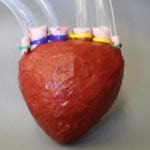 Technology
Technology  Technology
Technology  Humans
Humans 10 Everyday Human Behaviors That Are Actually Survival Instincts
 Animals
Animals 10 Animals That Humiliated and Harmed Historical Leaders
 History
History 10 Most Influential Protests in Modern History
 Creepy
Creepy 10 More Representations of Death from Myth, Legend, and Folktale
 Technology
Technology 10 Scientific Breakthroughs of 2025 That’ll Change Everything
 Our World
Our World 10 Ways Icelandic Culture Makes Other Countries Look Boring
 Misconceptions
Misconceptions 10 Common Misconceptions About the Victorian Era
 Mysteries
Mysteries 10 Strange Unexplained Mysteries of 2025
 Miscellaneous
Miscellaneous 10 of History’s Most Bell-Ringing Finishing Moves
 Technology
Technology Top 10 Everyday Tech Buzzwords That Hide a Darker Past
 Humans
Humans 10 Everyday Human Behaviors That Are Actually Survival Instincts
 Animals
Animals 10 Animals That Humiliated and Harmed Historical Leaders
Who's Behind Listverse?

Jamie Frater
Head Editor
Jamie founded Listverse due to an insatiable desire to share fascinating, obscure, and bizarre facts. He has been a guest speaker on numerous national radio and television stations and is a five time published author.
More About Us History
History 10 Most Influential Protests in Modern History
 Creepy
Creepy 10 More Representations of Death from Myth, Legend, and Folktale
 Technology
Technology 10 Scientific Breakthroughs of 2025 That’ll Change Everything
 Our World
Our World 10 Ways Icelandic Culture Makes Other Countries Look Boring
 Misconceptions
Misconceptions 10 Common Misconceptions About the Victorian Era
 Mysteries
Mysteries 10 Strange Unexplained Mysteries of 2025
 Miscellaneous
Miscellaneous 10 of History’s Most Bell-Ringing Finishing Moves
Top 10 Totally Unexpected Uses For Common Elements
In the 200 or so years that mankind has been arranging and grouping elements, we have discovered 118 of them, and we have figured out what most of them are good for. Oxygen is for breathing, helium is for having a good time without getting the police involved, gold is for hip hop artists, and curium is for, something, apparently. Some elements, however, can be used in alternative and often surprising ways. Here are ten elements with surprising applications.
10Copper Has Antimicrobial Properties

Long ago, even before man knew what science was, they knew that copper could kill things that could kill you. That weird fuzzy thing growing on the water would meet its demise at the hands of copper. Ancient Egyptian texts[1] say copper was used to clean wounds, sterilize water, and treat a variety of other ailments, such as burns, headaches, weird growths, and leg ulcers.
Today’s studies have observed that copper does indeed kill bacteria in the awesomely named process of “contact killing.” What is even more awesome is the actual process of contact killing. Studies suggest that when bacteria comes into contact with copper’s surface, the bacterial membrane ruptures and copper ions enter the bacteria and disrupt life processes until they die. Copper and its alloys are now known for their danger to microbes, and as such continue to see use in this day and age as doorknobs and other such things that a lot of people come into contact with.
9Phosphorus Can Be Used as a Deadly Weapon

Phosphorus is famous for almost nothing. It is used in matches and fertilizer, but that seems to be about it. The military, however, believed that phosphorus had not yet achieved its full potential as an element. Enter “white phosphorus.”
White phosphorus is made from a common allotrope of the element, and it is deadly. It was used in Vietnam, where it got the nickname “Willy Pete,” which in turn, came from military jargon. It rapidly oxidizes and ignites, which burns like hell, and ignites, fuel, clothes, ammunition, and burns deeply into skin.
It is the subject of controversy and intense debate; some feel that it should be classified as a chemical weapon[2] and therefore banned. It was used in Iraq, most notably in Fallujah, and supposedly more recently in Gaza and the Ukraine. However, white phosphorus is not used exclusively as a weapon and can be used in tracer rounds and smoke screens because of the amount of smoke it produces.
8Arsenic Can Detect Tumors
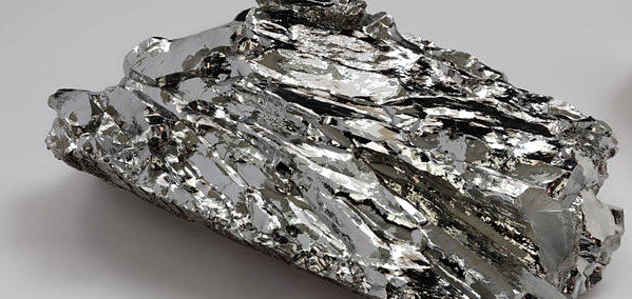
The world has been cracking down on arsenic and its toxic properties lately, which is a huge step up from using it as wallpaper and poisoning everyone in your home. The people who are generally in charge of making sure people do not die all agree that arsenic is bad and not good, but it would seem that arsenic is getting a second chance. New research has come to light revealing that the arsenic-74 isotope could be used to detect tumors.
In a paper published in 2012, a team of researchers crammed as many scientific-sounding words as they could into one paper. Upon further perusal of said paper, it is said that arsenic-74 isotopes were able to produce clear images of liver tumors[3] found in rats. The paper then concludes that arsenic has potential, and it is being researched further to see if it is safe for humans and that their doctors will not kill them while detecting tumors.
7Sulfur Is Used in Winemaking

If you have ever smelled anything foul, it was probably because of sulfur. Rotten eggs, skunks, and even body odor are caused by sulfur. The pungent substance is not something you want to be around. That is why some people decided it was a good idea to use it to make wine.
Sulfur dioxide has been in use in winemaking since the 15th century, and possibly earlier. Roman winemakers would burn sulfur candles in their wine barrels when transporting them to preserve the wine, and a Prussian decree[4] in 1487 allowed the use of sulfur dioxide in winemaking.
Sulfur dioxide is a pungent gas that has antimicrobial properties. It kills any sort of yeast that might grow in the barrel and turn the wine to vinegar. A ten percent solution of potassium metabisulphite is added to wine, and the sulfur just does its thing. If you think that this is just some artisan, hipster thing, rest assured that it is not, and it is actually a common practice in the winemaking industry.
6Gallium Can Detect Neutrinos
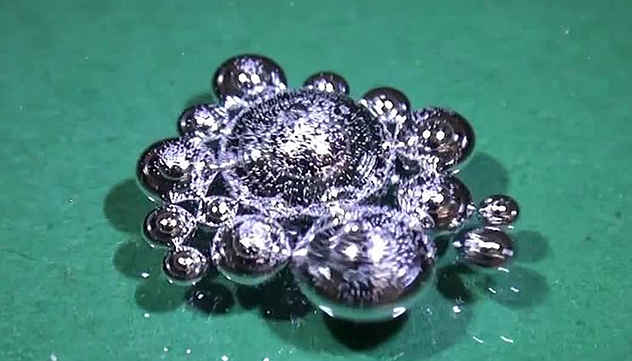
Gallium is that one element that melts in your hand and was a source of amazement and wonder in the days of grade school. So what could one element with the melting point of a Popsicle have to do with neutrinos, one of the least understood aspects of the universe?
Scientists have been trying to understand neutrinos[5] since they were discovered. They behave like electrons, but without a charge. Since they are so small and hard to detect, scientists need to know how to find them, because they can help understand the universe.
Researchers studying neutrinos had a tank filled with 101 tons of gallium-trichloride-hydrochloric acid, and this mixture contained 30 tons of gallium. The researchers then worked their science-magic and used neutrinos to induce nuclear reactions. The gallium was transmuted into germanium and then converted to germane. When they detected the decay of the germane with a counter, they noticed that the decay agreed with earlier studies made about neutrinos. Each detected decay corresponded with each detected neutrino.
5Cesium Is Used in Atomic Clocks
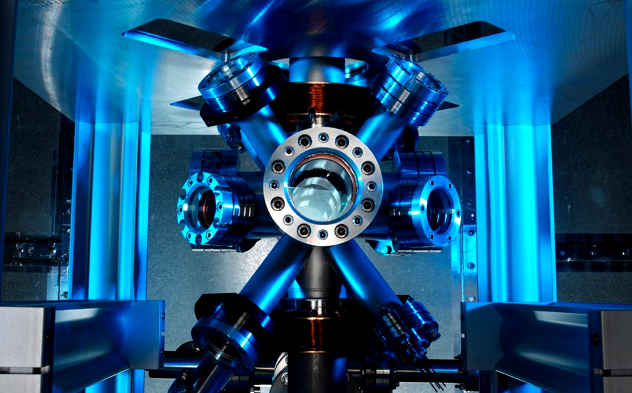
Atomic clocks are the most accurate clocks on the planet. The time on your phone and on your computer is probably synced to an atomic clock somewhere. Atomic clocks make sure that the world runs smoothly enough. If you were just in time to catch Wrestlemania on TV, thank atomic clocks.
The standard time in the United States is provided by cesium, an element you have probably never heard of and will forget about again shortly after reading this article. Before you forget, atomic clocks are powered by locking an electric oscillator to the frequency of an atomic transition. Since transitions are stable and constant, they make for a good measurement of time.
During the cycles of the cesium atoms, they will reach the frequency of 9,192,631,770 Hz. They pass through a microwave field with an almost exact frequency and any cesium atoms[6] that receive the energy, change their energy state. A magnetic field separates the atoms, and those with the correct energy state are detected by a detector. The output peaks, and is used to adjust the frequency of the microwave field, and that frequency is divided by 9,192,631,770 to get one pulse per second. Simple, right?
4Xenon Is an Anesthetic

Xenon is one of the coolest-sounding elements, but not many people know what it is good for. A few people would probably assume it was a planet or something. It is actually a noble gas and can be found in Earth’s atmosphere.
Xenon can actually be used as an anesthetic, as it is a high-affinity glycine-site NMDA receptor antagonist. There is also less risk of hypoxia[7] with the use of xenon. Xenon has an advantage over other NMDA receptor antagonists because of its lack of neurotoxicity. It actually reduces the neurotoxicity of ketamine and nitrous oxide, other more popular anesthetics.
Another plus point for xenon is that it is not a greenhouse gas, so releasing it into the atmosphere will not harm it. There is already xenon in the atmosphere, so the atmosphere should not be harmed by the addition of more xenon. It is akin to adding more stuff to a pizza; the only people complaining are probably crazy.
3Bismuth Can Fight Diarrhea
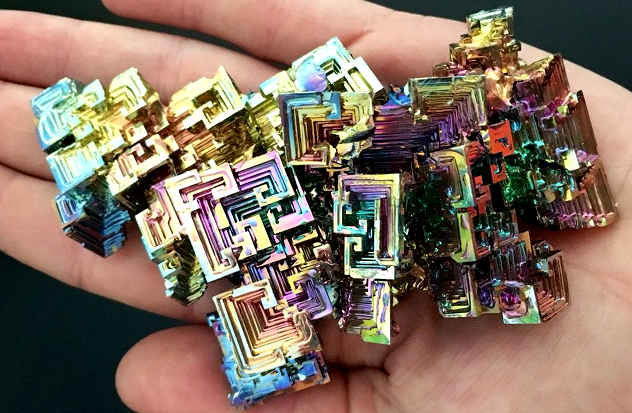
Bismuth has been known since ancient times, where it was confused for other, more valuable metals, like tin, lead, and even antimony, which is surprising because nobody knows what antimony is. Nowadays, bismuth enjoys a position few other metals do: it has got a place in the medicine cabinet.
If you have had diarrhea and had to drink a pink liquid or take a tablet named Pepto-Bismol, then bismuth has greatly alleviated your discomfort. Pepto-Bismol is the marketing name of bismuth subsalicylate, and it is a colloid of bismuth salicylate, with the empirical formula of C7H5BiO4. It works by decreasing the flow of electrolytes and fluids[8] into the bowel. It also kills the organisms that cause diarrhea.
Whenever we feel the runs coming, we all know who to thank. Bismuth does not get enough love for the job it does. Bismuth does a thankless job of soothing your stomach with a wintergreen flavor.
2Zinc Can Be a Treatment for the Common Cold

We already use a lot of zinc. It is in our food, it is a dietary supplement, and it is even in sunscreen lotion. We cannot seem to get enough of zinc. There are so many uses for it, and some scientists and researchers think that it could be a remedy for the common cold.
Zinc acetate or zinc gluconate, when taken in lozenge form or as a nasal gel, could alleviate cold symptoms. Scientists are not entirely sure how the zinc works, but results show zinc can be a treatment for the common cold. The symptoms of the common cold, such as discharge, congestion, sneezing, coughing, and others, were shown to have been reduced by varying percentages when the subject was taking zinc. These may be because of the way zinc affects the pharyngeal region. In fact, zinc was discovered to treat the common cold[9] when a girl with leukemia dissolved a zinc tablet in her mouth and her cold symptoms disappeared. Since then, scientists have been researching zinc.
1Tungsten Is Used to Counterfeit Gold
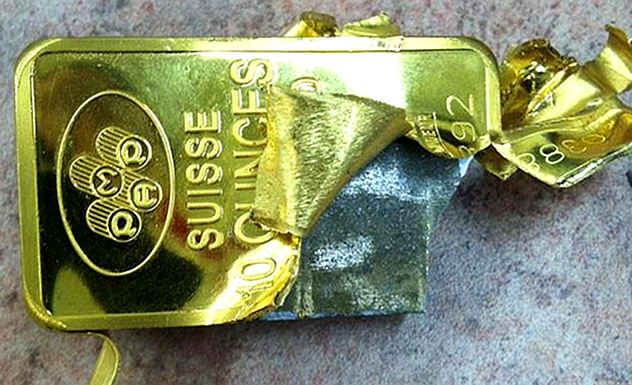
Tungsten comes from the Swedish words tung sten, which means “heavy stone.” It also has the alternate name of wolfram, which is infinitely cooler sounding than tungsten. Wolfram just rolls off the tongue better.
The density of tungsten is 19.25g/cm3, while the density of gold is 19.3g/cm3. Because of the closeness of the densities, tungsten can pass off as gold in superficial tests. There are several methods[10] to do this. One is to plate a bar of tungsten with gold. While this scam dates back to the 80s, people still fall for it. As recently as 2010, a bank in Germany was fooled into accepting gold-plated tungsten bars. Tungsten can be bought for $30 a pound, while the price of gold per pound is exponentially larger, so this is an appealing and lucrative trick to pull. However, if you get caught, you will go to jail, so do us a favor and don’t get caught.
Reuben is often called a “sheep in wolf’s clothing” by his friends, and “stranger” by people he doesn’t know. You can read his other works at Hubpages.





